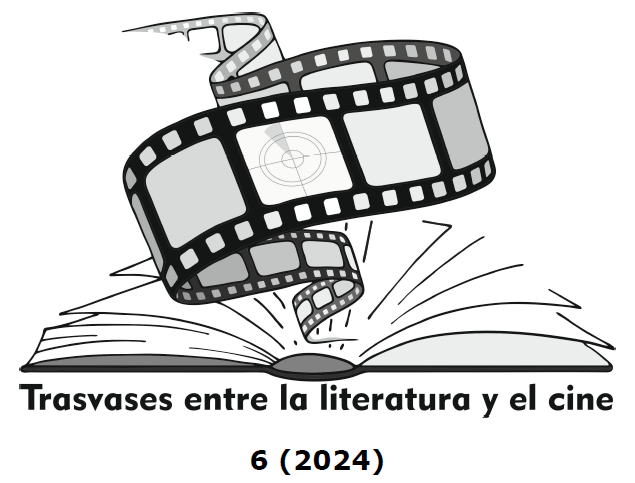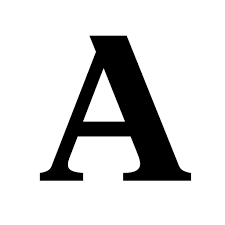Máscaras y sombras. La construcción del sí-mismo en Un método peligroso (2011)
DOI:
https://doi.org/10.24310/tlc.6.2024.19840Palabras clave:
Cine, Psicoanálisis, Historia, Psicología, Parapsicología, Psicología Clínica, BiografíaResumen
Un método peligroso (2011) es un drama histórico dirigido por David Cronenberg sobre la relación entre algunos de los primeros proponentes del psicoanálisis: Carl G. Jung, Sigmund Freud y Sabina Spielrein. Este artículo trata la obra como un estudio de personajes, basado en varios elementos de la psicología analítica fundada por Jung. Se interpreta la narrativa del filme como parte del proceso de «individuación» sobre el que escribió, en los que el individuo debe contender con arquetipos como «la persona», «la sombra», «el ánima» o «el padre». Un método peligroso sirve como una dramatización de la crisis personal de Jung entre 1904 y 1913, y cómo resultó crucial para sus teorías posteriores.
Descargas
Métricas
Publicación Facts
Perfil de revisores N/D
Información adicional autores
Indexado: {$indexList}
-
Indexado en
- Sociedad Académica/Grupo
- N/D
- Editora:
- Universidad de Málaga
Citas
AGUAYO, Joseph (2013), «Freud, Jung, Sabina Spielrein and the countertransference: David Cronenberg’s A Dangerous Method», The International Journal of Psychoanalysis, 94, págs. 169-178.
BASSETT, Kate (2003), «The Talking Cure, NT Cottesloe, London Auntie & Me, Wyndhams, London A Little Fantasy, Soho, London», The Independent [En línea: https://web.archive.org/web/20110912155121/http://www.independent.co.uk/arts-entertainment/theatre-dance/reviews/the-talking-cure-nt-cottesloe-londonbrauntie-amp-me-wyndhams-londonbra-little-fantasy-soho-london-602314.html. Fecha de consulta: 02/04/2024].
BASSIL-MOROZOW, Helena (2012), «A Dangerous Method», International Journal of Jungian Studies, 5/1, págs. 112-114.
BERMAN, Jeffrey (1985), The Talking Cure: Literary Representations of Psychoanalysis, EEUU, International Psychotherapy Institute.
BILLINGTON, Michael (2003), «The Talking Cure», The Guardian [En línea: https://www.theguardian.com/stage/2003/jan/14/theatre.artsfeatures3. Fecha de consulta: 02/04/2024].
BONILLA, Borja (2013), «Reseña sobre la película “Freud. Pasión secreta” (1962), de John Huston - “Un método peligroso”
(2012), de David Cronenberg», Clínica Contemporánea, 4/1, págs. 93-97.
CAROTENUTO, Aldo (1982), A secret symmetry: Sabina Spielrein between Jung and Freud, trad. de A. Pomerans, J. Shepley y K. Winston, Estados Unidos, Pantheon Books.
DAL MASSO, Donald F. (1995), «A Most Dangerous Method: The Story of Jung, Freud, and Sabina Spielrein. By John Kerr», Journal of Religion and Health, 34/4, págs. 368-369.
FERREL, Donald R. (2012), «A Dangerous Method, A Film Directed by David Cronenberg: An Extended Review», Journal of Religion and Health, 51/3, págs. 682-700.
FREUD, Sigmund y Carl G. JUNG (1974), The Freud/Jung letters, Londres, Hogarth/Routledge & Kegan Paul.
HENDERSON, Joseph L. (1964), «Ancient myths and modern man», en C. G. Jung y M. L. Von Franza (eds.), Man and his Symbols, San Sebastián, Anchor Press, págs. 104-157.
HEUER, Gottfried M. (2012), «A Most Dangerous – and Revolutionary – Method: Sabina Spielrein, Carl Gustav Jung, Sigmund Freud, Otto Gross, and the Birth of Intersubjectivity», Psychotherapy and Politics International, 10/3, págs. 261-278.
HEURER, Gottfried M. (2012), «A Dangerous Method», International Journal of Jungian Studies, 5/1, págs. 115-118.
HOFFER, Axel (2013), «The Freud-Jung rupture as portrayed in the film A Dangerous Method», Journal of the American Psychoanalytic Association, 64/4, págs. 819-832.
HYDE, Lewis (2010), Trickster Makes This World: Mischief, Myth, and Art, Nueva York, Farrar, Straus and Giroux.
JUNG, Carl G. (1933), Modern man in search of a soul, trad. de W. S. Dell y Cary F. Baynes, Edimburgo, Edinburgh Press.
JUNG, Carl G. (1967), Memories, Dreams, Reflections, trad. de Richard y Clara Winston, Londres, Willaim Collins.
JUNG, Carl G. (1983a), «Vol. 5: Symbols of Transformation», en H. Read et al. (eds.), The Collected Works of C. G. Jung, Nueva York, Princeton University Press, págs. 1950-2833.
JUNG, Carl G. (1983b), «Vol. 7: Two Essays in Analytical Psychology», en H. Read et al. (eds.), The Collected Works of C. G. Jung, Nueva York, Princeton University Press, págs. 3570-4069.
JUNG, Carl G. (1983c), «Vol. 8. Structure and Dynamics of the Psyche», en H. Read et al. (eds.), The Collected Works of C. G. Jung, Nueva York, Princeton University Press, págs. 4070-4822.
JUNG, Carl G. (1983d), «Vol. 9. Part I. Archetypes and the Collective Unconscious», en H. Read et al. (eds.), The Collected Works of C. G. Jung, Nueva York, Princeton University Press, págs. 4823-5502.
JUNG, Carl G. (1983e), «Vol. 11. Psychology and Religion: West and East», en H. Read et al. (eds.), The Collected Works of C. G. Jung, Nueva York, Princeton University Press, págs. 6754-7683.
JUNG, Carl G. (1983f), «Vol. 12: Psychology and Alchemy», en H. Read et al. (eds.), The Collected Works of C. G. Jung, Nueva York, Princeton University Press, págs. 7693-8477.
JUNG, Carl G. (1983g), «Vol. 13. Alchemical Studies», en H. Read et al. (eds.), The Collected Works of C. G. Jung, Nueva York, Princeton University Press, págs. 8478-9258.
JUNG, Carl G. (1983h), «Vol. 16: The Practice of Psychotherapy», en H. Read et al. (eds.), The Collected Works of C. G. Jung, Nueva York, Princeton University Press, págs. 10446-10964.
JUNG, Carl G. (1998), Visions: Notes on the Seminar Given in 1930-1934, Nueva Jersey, Princeton University Press.
KERR, John (1993), A most dangerous method: the story of Jung, Freud, and Sabina Spielrein, EEUU, Alfred A. Knopf.
LAUDO, Isabel (2012), «Un método peligroso de David Cronenberg», Temas de Psicoanálisis, 3, s. pág. [En línea: https://www.temasdepsicoanalisis.org/2012/01/11/un-metodo-peligrosode-david-cronenberg/. Fecha de consulta: 29/04/2024].
LOWENSTEIN, Adam (2012) «A Dangerous Method: Sight Unseen», Film Quarterly, 65/3, págs. 24-32.
MERCADAL, Gabriela (2012), «La decisión por la causa. Un análisis a partir del film A Dangerous Method», Revista Universitaria de Psicoanálisis, 12, págs. 313-334.
PEBERDY, Donna (2017), «A Dangerous Method: Provocative Performances of Perversion», en D. KERR y D. PEBERDY (eds.), Tainted Love: Screening Sexual Perversion, I.B.Tauris, págs. 83-103.
RICHO, David (2007), The Power of Coincidence, Estados Unidos, Shambhala Publications, Inc.
THOMAS, Daniel Michael, (1982), «A fine romance. [Review of the book A secret symmetry: Sabina Spielrein between Jung and Freud. The untold story of the woman who changed the early history of psychoanalysis, by A. Carotenuto]», New York Review of Books, 28, págs. 3-4.
THOMPSON, Anne (2011), «INTERVIEW: Cronenberg Talks Intellectual Menage a Trois A Dangerous Method, Knightley’s Bondage», IndieWire [En línea: https://www.indiewire.com/features/general/interview-cronenberg-talks-intellectual-menage-a-trois-a-dangerous-method-knightleys-bondage-183978/. Fecha de consulta: 03/04/2024].
VON FRANZ, Marie-Lousie (1964), «The process of individuation», en C. G. Jung y M. L. von Franza (eds.), Man and his Symbols, San Sebastián, Anchor Press, págs. 158-229.
WILKES, Gregory Chad (2012), «A Dangerous Method», Journal of Religion & Film, 16/1.
ZABRISKIE, Beverly, Sharn WALDRON, Jan WIENER y Gottfried M. HEUER (2012), «Cronenberg’s A Dangerous Method: Reviews and comments», Journal of Analytical Psychology, 57, págs. 645-677.
Publicado
Cómo citar
Licencia
Derechos de autor 2024 Guillermo González Hernández

Esta obra está bajo una licencia internacional Creative Commons Atribución-NoComercial-CompartirIgual 4.0.
Aquellos autores/as que tengan publicaciones con esta revista, aceptan los términos siguientes:
- Los autores/as conservarán sus derechos de autor y garantizarán a la revista el derecho de primera publicación de su obra, el cuál estará simultáneamente sujeto a una licencia Creative Commons Reconocimento-NoComercia-Compartirigual 4.0 cuyo texto completo puede consultar en <http://creativecommons.org/licenses/by-nc-sa/4.0>
- Los autores/as podrán adoptar otros acuerdos de licencia no exclusiva de distribución de la versión de la obra publicada (p. ej.: depositarla en un archivo telemático institucional o publicarla en un volumen monográfico) siempre que se indique la publicación inicial en esta revista.
- Se permite y recomienda a los autores/as difundir su obra a través de Internet (p. ej.: en archivos telemáticos institucionales o en su página web), lo cual puede producir intercambios interesantes y aumentar las citas de la obra publicada. (Véase El efecto del acceso abierto).
Es responsabilidad de los autores/as obtener los permisos necesarios de las imágenes que están sujetas a derechos de autor.
Esta revista electrónica está editada por la Editorial de la Universidad de Málaga (UmaEditorial), siendo necesario citar la procedencia en cualquier reproducción parcial o total.








22.png)











